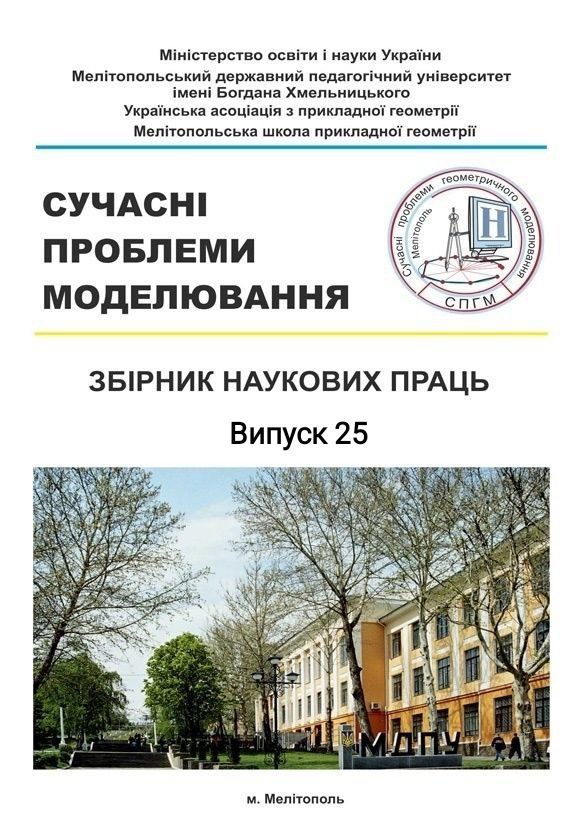PERSONAL SIMULATION OF EXPERIMENTAL PROBLEMS IN GRAPHIC GEOMETRY IS ONE OF THE WAYS OF IMPROVING THE QUALITY OF STUDENTS' KNOWLEDGE
Abstract
The article presents some results of observation of students' preparation for Olympiads in sketch geometry and engineering graphics, some aspects of modeling epuric problems. The effectiveness of the training of technical specialists in higher education directly depends on several factors - the initial level of students' knowledge, interest in learning key disciplines, the ease of learning new material, the involvement of students in geometric modeling processes, etc. The study of the discipline "Sketch geometry" is an integral part of a comprehensive approach to the training of engineering specialists. Graphical geometry is a basic discipline for others - engineering graphics, computer graphics from the point of view of acquiring geometric modeling skills. The process of geometric modeling begins with the spatial representation of objects, their mutual location and corresponding interaction. Therefore, it is important to approach the tasks offered to students. They should demonstrate the dynamics of progress. Such a discussion with students of the proposed geometric objects can be organized in practical classes, but it will be more effective in the work of engineering circles for students, for example, in the process of preparing for the Olympiad in the disciplines "Sketch Geometry", "Engineering Graphics". The article examines approaches to presenting students with problem statements, and, accordingly, involving students in active participation in each stage of solving the problem - from the analysis of the condition to obtaining the result. The criterion of students' depth of understanding is their ability to change some individual parts of the condition and investigate the corresponding changes in the process of solving the problem and obtaining new results. The problems proposed in preparation for the Olympiad have an increased level of complexity, but the algorithms for solving them are based on solving simple problems, each of which is a separate stage of the geometric modeling process.
Key words: descriptive geometry, Olympiad, epurious problems, geometric modeling, geometric locations of points, methods of construction, replacement of the projection plane.




